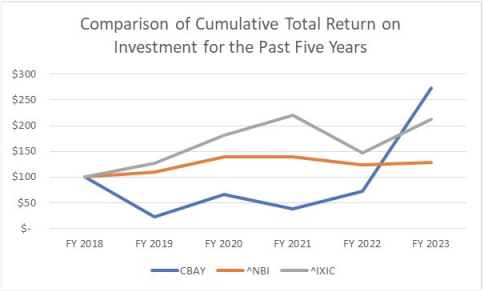General Risks
We do not anticipate paying cash dividends, and accordingly, stockholders must rely on stock appreciation for any return on their investment.
We do not anticipate paying cash dividends in the future. As a result, only appreciation of the price of our common stock, which may never occur, will provide a return to stockholders. Investors seeking cash dividends should not invest in our common stock.
We may be subject to securities litigation, which is expensive and could divert management attention.
Our share price is volatile, and in the past, companies that have experienced volatility in the market price of their stock have been subject to securities class action litigation. We may be the target of this type of litigation in the future. Securities litigation against us could result in substantial costs and divert our management’s attention from other business concerns, which could seriously harm our business.
Item 1B. Unresolved Staff Comments
Not applicable.
Item 1C. Cybersecurity
Risk management and strategy
We have implemented and maintain various information security processes designed to identify, assess and manage material risks from cybersecurity threats to our critical computer networks, third party hosted services, communications systems, hardware and software, and our critical data, including intellectual property, confidential information that is proprietary, strategic or competitive in nature, and data amassed from our clinical trials (“Information Systems and Data”).
Our information technology department, with the support of our senior management, assesses and manages the Company’s cybersecurity threats and risks. Our information technology department leverages third-party service providers to identify cybersecurity threats by monitoring and evaluating our threat environment, and then assesses these risks. We, and/or our third-party service providers, use various methods in identifying and assessing these risks, including, for example, manual and automated tools to identify and combat cybersecurity threats, analyzing reports of threats, conducting scans and assessments of the threat environment and to identify vulnerabilities, the use of detection and response services (including behavioral analytics and machine learning to identify security threats) and conducting reviews of third-party service providers, among other things. We use third-party service providers to assist us from time to time to identify, assess, and manage material risks from cybersecurity threats, including for example penetration testing, threat intelligence, dark web reporting, cybersecurity consulting and software, and professional services for implementation and security architecture.
Depending on the environment, we implement and maintain various technical, physical, and organizational measures, processes, standards and policies designed to manage and mitigate material risks from cybersecurity threats to our Information Systems and Data, including, for example, physical security and access controls, asset management, systems monitoring, incident detection and response, risk assessment, the implementation of security standards and certifications, encryption of data, network security controls, and a disaster recovery/business continuity plan, among other mitigation tactics.
Our assessment and management of material risks from cybersecurity threats are integrated into the Company’s overall risk management processes. For example, our information technology department works with its management and with legal and compliance to evaluate material risks from cybersecurity threats against our overall business objectives, working with other individuals from senior management as needed. Certain cybersecurity issues may then be reported to the board of directors.
61

